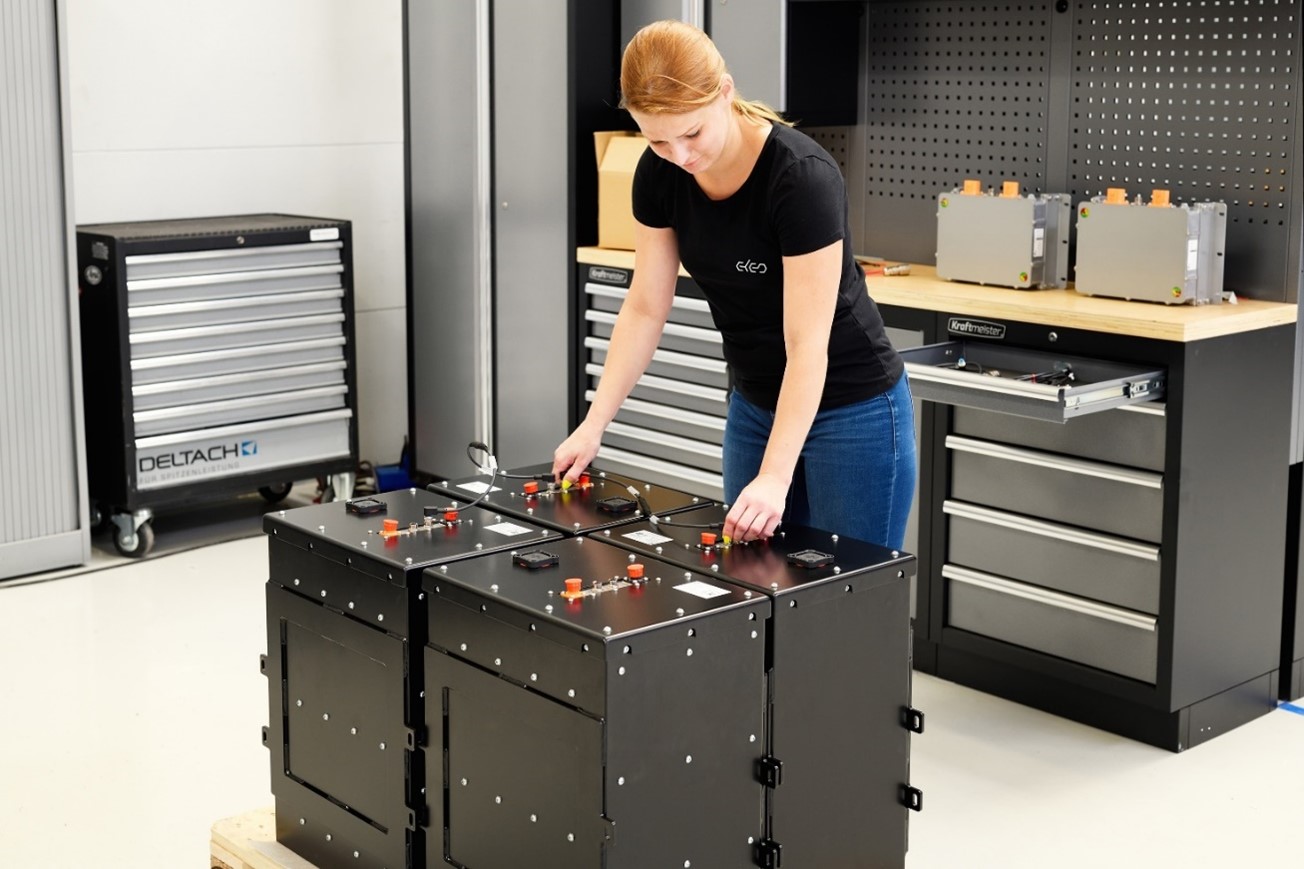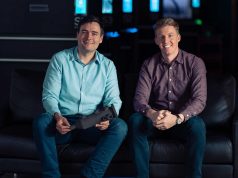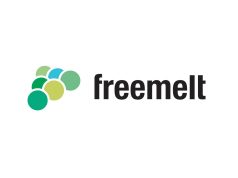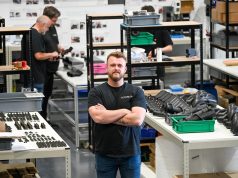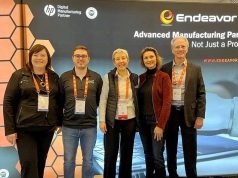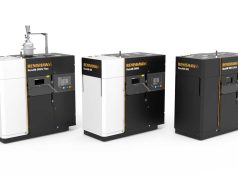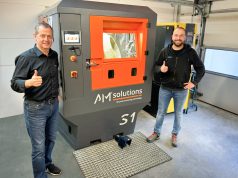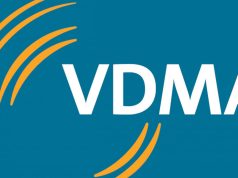For the ELEO battery factory, 3D printing is the most normal thing in the world. It is an inseparable part of the production process. The scale-up ELEO uses 3D printing specifically to accelerate development processes. The TU Eindhoven spin-off develops battery systems for large excavators in the construction industry, among others, but also for smaller logistics vehicles in warehouses.
How it all began
The company has been using 3D printers since its inception as student team STORM in 2014, says Jules Frints, product developer at ELEO. At the time, the team got a printer sponsored by the 3D printing company where his colleague and friend Stephan van der Burgh worked. The two are the 3D specialists at the company.
“At first, we wondered if we would really do that much with it. But then we were so excited that we bought one ourselves. And it was later replaced with a better version. Now we have two”, Says Frints.
In 2016, the student team rode a homemade electric motorcycle around the world in eighty days. The bike served as a showcase to show the world that it’s possible to go electric anywhere, co-founder Bas Verkaik told IO in an earlier interview.
Today’s battery kits
Now ELEO is developing modular battery systems that customers can use in their own vehicles. A package consists of several modules and a control unit.
“We can develop it completely customized. Depending on the customer’s voltage, capacity and volume requirements, a package consists of one or more modules”, Says Frints.
The company is based at the Automotive Campus in Helmond.
3D printing is not an end in itself for ELEO, Frints adds.
“In the development phase, it’s very useful if you can quickly create a prototype.”
Parts that will then be injection molded at a later date. This process has a much longer lead time than 3D printing.
“You need a mold for it. It’s pretty expensive to make. Preferably, you want to get the mold right the first time. And then you still have to manufacture the products. That can take a couple of months.”
You also don’t have to depend on third parties and can make something quickly for testing, Frints argues.
“It’s nice to have a product in your hands at an early stage. Everything doesn’t have to be perfect right away. You can quickly make something in a free form and then start fine-tuning it.”
Of course, then it doesn’t have the same accuracy or strength as the final material. For some tests, that’s not necessary either, Frints says. For example, to see how sensitive a pattern is to electromagnetic radiation.
“It doesn’t matter whether I’m using a 3D printed part or a plastic injection molded part. However, for fire protection, vibration and shock tests, it then comes back to accuracy and the material.”
3D printer integrated into production process
The 3D printer is fully integrated into the company’s production process and is used to produce prototypes and tools.
“For us, it’s quite normal to quickly turn an idea into a 3D print. Just this week, that happened. We needed to assemble several components and we quickly printed a template for that. Just to put the components in place.”
It also happens that a 3D-printed part remains on the production line.
“We’re not talking about large quantities. But sometimes we print a part for a customer, for example to hold cables together, and it stays in there.”
ELEO doesn’t print all the parts itself.
“It depends on the function and the accuracy required whether we outsource a print,” Frints says.
The company has an FDM printer and an SLA printer. If other printers are needed, that task is outsourced.
“For example, a Multi Jet Fusion printer prints with a certain type of nylon. This allows you to make nicer and more accurate products than with our printers. It also depends on the geometry of a part. If the shape is too complex, we have a special company that prints that for us.”
Frints prints small stable and large rough parts itself.
The new generation of batteries
Frints is currently working on the prototypes of the new generation of batteries that the company will launch later this year. To this end, the printed test version of a so-called cell spacer has been replaced by a version made from a steel injection mold.
“This could result in a few hundred thousand products,” he says.
Brainport Eindhoven’s entire additive manufacturing ecosystem
You can visit Brainport Eindhoven’s entire additive manufacturing ecosystem during Formnext, November 15-18, 2022 in Frankfurt, Germany. On November 16, a special mobility day for automotive companies will take place. Anyone interrested in participating is encouraged to visit the trade show.
Find out more about ELEO at eleo.tech.
To learn more about Brainport Eindhoven at brainporteindhoven.com.
Subscribe to our Newsletter
3DPresso is a weekly newsletter that links to the most exciting global stories from the 3D printing and additive manufacturing industry.



